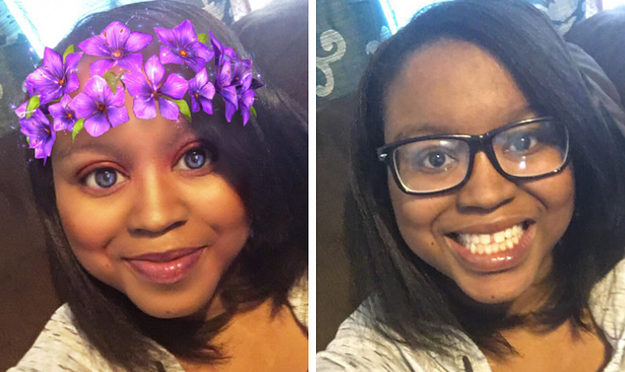Keah Brown is a journalist and writer whose work has appeared in ESPNW, Teen Vogue, Lenny Letter and other publications. She also runs an amazing Twitter. Recently, Keah launched the #DisabledAndCute hashtag declaring herself and anyone who cared to contribute their own selfies cute. It has since become a huge hashtag, with people from all around the world with many types of disabilities and with many different intersections contributing their own cuteness and self love. Magazines and content aggregator sites alike have posted galleries from the tag, and Keah was even interviewed for TV.
I decided I wanted to interview Keah and talk about the tag, representation, intersectionality, and writing.
Savannah: I loved the way that the hashtag uses the attractive rather than patronizing use of cute. Could you talk a little about how you landed on cute?
Keah: the word cute was intentional. I feel cute. I think it’s important to use the word and strip it of it’s patronizing usage. I didn’t use another word like sexy, fine, or hot simply because I don’t feel those other words yet. I hope to one day but I’m not there and cute was what felt most comfortable to me.
Savannah: The hashtag got a mix of visibly, invisibly, and conditionally visibly disabled folks, which feels really important. Do you have any thoughts on the way that this was so meaningful across disability?
Keah: I’m very grateful that people in all the ranges of disability chose to participate in the hashtag. I think it is imperative that we shine a light on all types of disability both physical and invisible. I also think it is important to acknowledge and listen to disabled people of color, disabled people who are in the LGBTQIA community, as well as gender nonconforming disabled people and all the people who made those multiple intersections. I think we can’t really move forward unless we are seeing everyone in the community and not just the people who are white.
Savannah: I’m glad you brought up how important it is that we are listening to the voices of disabled PoC and disabled LGBTQIA folks! Since the image of disability is so white- I even noticed some of the people making storifies/galleries of #disabledandcute had mostly white folks included- what can publications do to further increase the visibility of intersectionality within our communities, and especially disabled PoC?
Keah: For me, it’s about putting in the extra work. I’ve noticed that about galleries with the hashtag as well. It’s disheartening. I think that at this point there is no excuse— if you can go into the hashtag and only see white disabled people then that’s what you’re looking for, meaning that you are not looking hard enough. I think in order to include us, you have to work to do it. I hope more publications and people will listen to us when we speak, champion us, and our voices and share our work. They need to recognize their privilege and fight the gut instinct to only include people who look like them in their stories.
Savannah: What is some of your other work? I noticed some poetry in the resume area of your website. Do you think of yourself as a poet or a writer or both or neither?
Keah: I am a writer. I writer poetry, fiction, and nonfiction. I love them all very much but fiction is in fact my first love. I see myself as all things. I am a writer and poet and journalist. What makes them also special is that you get to express yourself in different ways. In nonfiction you tell your own stories. However, in journalism, fiction, and poetry you can tell the stories of other people. That to me is just as much of a privilege as anything else.
Savannah: As a black woman, can you talk a little about how your work is talked about differently? How is attribution management different?
Keah: As a black woman my work is definitely talked about differently. I tend to be on the receiving end of a lot of backlash it is very racially charged. and people assume that I lifted my ideas off of someone else instead of giving me the credit that I’m due. Also, people are less likely to attribute my work to me and so I have to ask to receive recognition for the thing that I created and that’s very frustrating.
Savannah: Any projects coming up that we should look for? Or just hints of where to look?
Keah: I’ve got a lot of really cool things coming up in 2017! I have some essays coming from Book Riot & Lenny Letter and a few things I can’t quite announce yet. Keep an eye out on my Twitter @Keah_Maria I’ll be announcing those things there in the coming months. Until then, just check out my work on my website and tell your friends about me. This hashtag is just the beginning!
You can add your own selfie to #DisabledAndCute by tweeting a photo using the hashtag,

